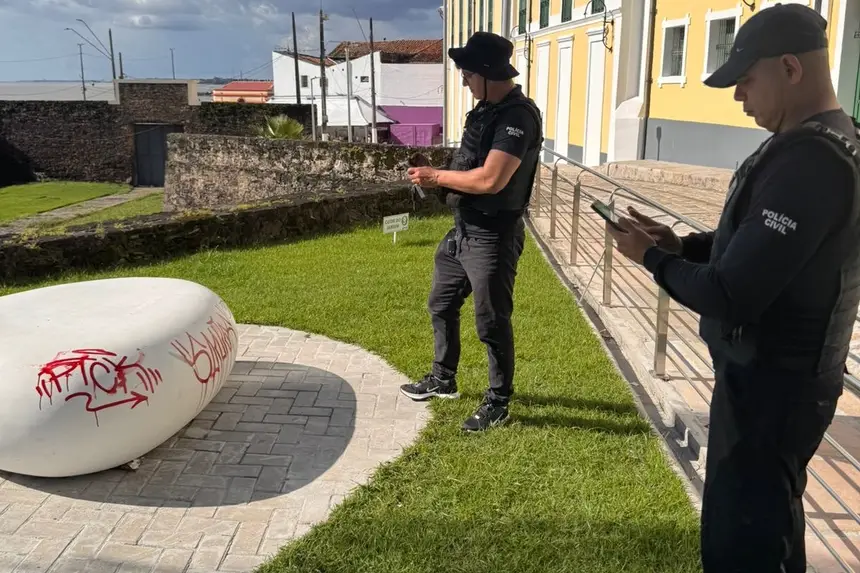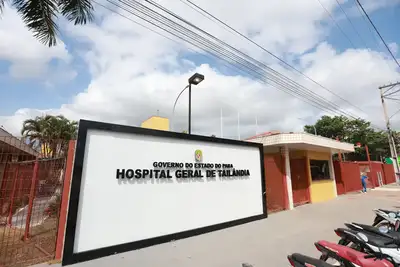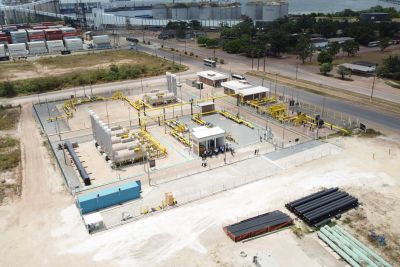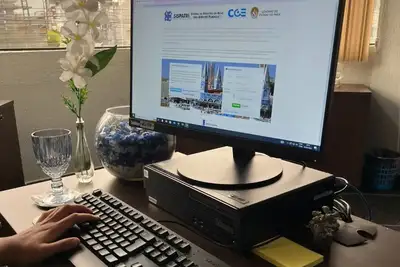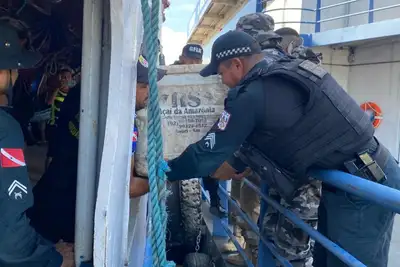Civil Police hears third suspect of graffiti in protected area of Belém
The other two suspects voluntarily presented themselves earlier this week
On Wednesday (9), the third suspect of graffiti in a protected area in Cidade Velha, Belém, presented himself to the Civil Police. During the interrogation, he reserved the right to remain silent. With this, all those involved in the crime that occurred near the Forte do Presépio have already been identified and heard by the police team.
The investigation is conducted by the Delegacy for the Repression of Crimes against Urban Order and Cultural Heritage, linked to the Specialized Division for the Environment and Animal Protection (Demapa).
The other two suspects gave testimony earlier this week. The first, on Monday (7), at which time he confessed to the crime and pointed out the names of the other involved. The second gave testimony on Tuesday (8).
During the hearings, one of the investigated handed over a “Solid Marker” type pen, which was allegedly used in the graffiti. The object was seized and will be submitted to forensic examination. The Civil Police is also awaiting the technical report from the crime scene to conclude the inquiry.
“We quickly collected the necessary elements, crossed data from open and closed sources, and managed to identify all the authors. Now, we await the results of the forensic examinations to conclude the procedure and forward it to Justice,” said Delegate Edson Azevedo, head of Demapa.
Understand the case - The graffiti occurred in the early hours of last Saturday (5), affecting historical stones and sections of public sidewalks around the Forte do Presépio, one of the most emblematic landmarks of the capital of Pará, recognized as cultural heritage by the National Institute of Historical and Artistic Heritage (Iphan).
The three suspects will be charged with graffiti on a protected property, a crime provided for in Article 65, §1 of Law No. 9,605/98 (Environmental Crimes Law), whose penalty is six months to one year of detention, in addition to a fine. If damage to public property is proven, they may also be charged with qualified damage (art. 163, item III, of the Penal Code), with a penalty of six months to three years of detention. If there is evidence of organized action among them, they may also be classified as a criminal association (art. 288 of the Penal Code), with a penalty ranging from one to three years of imprisonment.
The Civil Police emphasizes that reports can be made anonymously through the Disque-Denúncia, at number 181.


